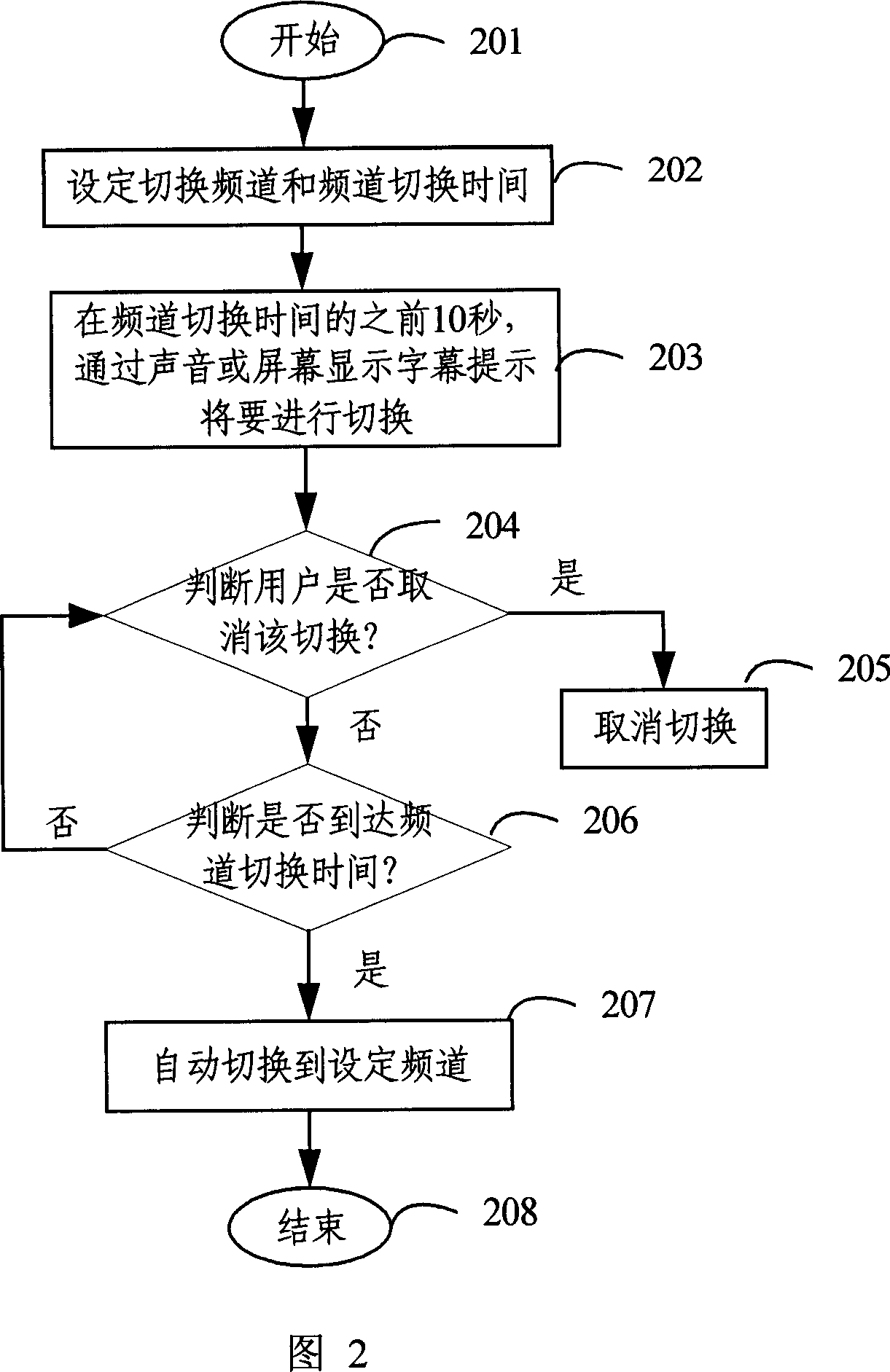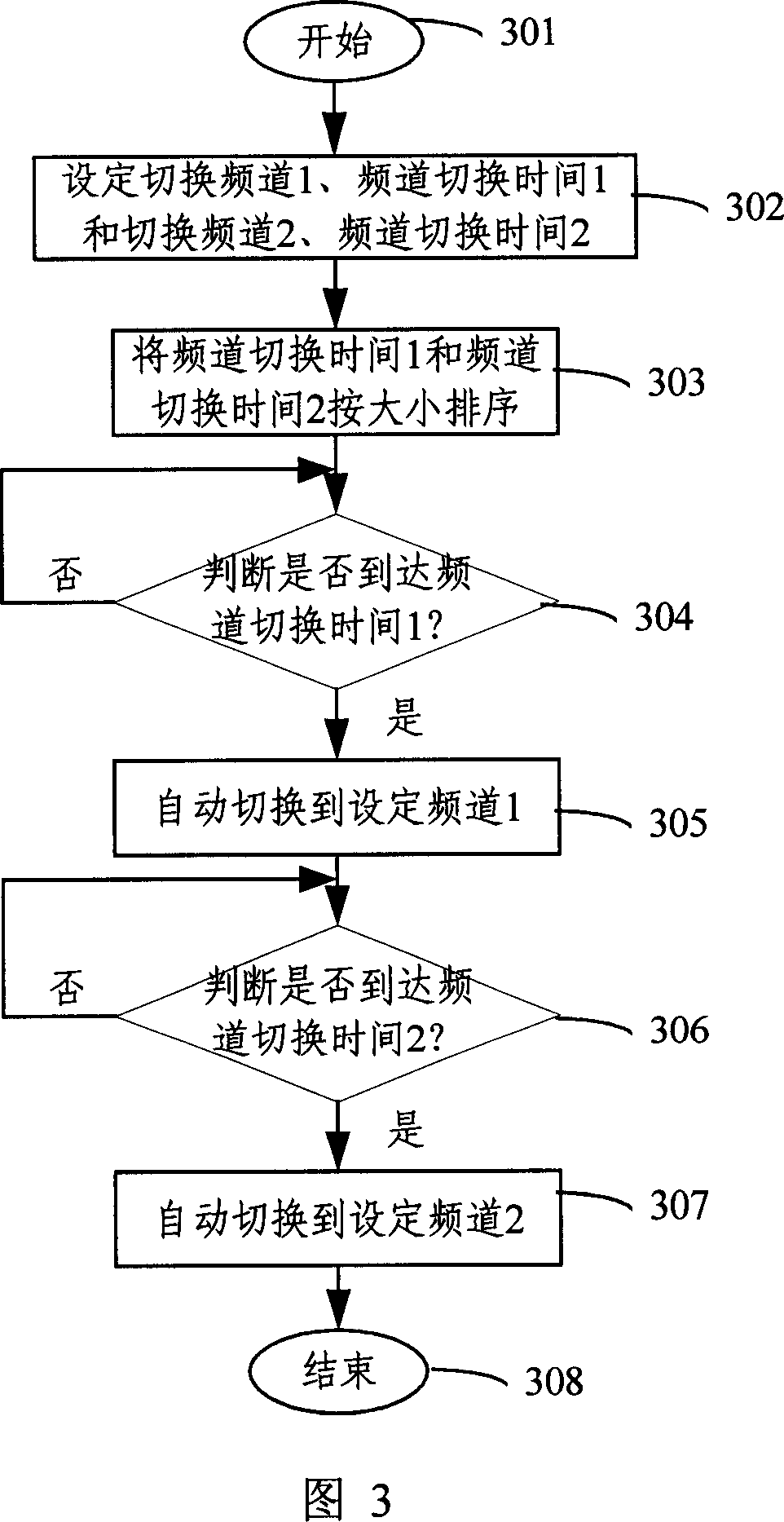Automatic television channel switching method and system
A technology for automatic switching of TV channels, applied to parts of TV systems, parts of color TVs, TVs, etc., can solve the problems of troublesome, unreliable, and numerous advertisements for manual channel switching, and achieve humanized and automatic switching. Switching is more efficient and easy to operate
- Summary
- Abstract
- Description
- Claims
- Application Information
AI Technical Summary
Problems solved by technology
Method used
Image
Examples
Embodiment Construction
[0022] As shown in FIG. 1 , it is a flow chart of the first embodiment of the method for automatically switching television channels of the present invention. After the method starts in step 101, in step 102, channel switching and channel switching time are set. The set switching channel may be the current channel or any channel selected by the user. Now some TV stations have begun to introduce humanized prompts, that is, when advertising and some information are broadcast, a countdown of the program being broadcast will be displayed in the upper right corner of the TV screen, which is used to explain how many minutes are left in the time of the advertisement or related programs. Therefore, when setting the channel switching time, you can refer to the countdown of the broadcast program given by the TV station, and set the channel switching time to the same time value as this. Thereafter, the user can safely watch programs of other channels or do other things. In addition, al...
PUM
 Login to View More
Login to View More Abstract
Description
Claims
Application Information
 Login to View More
Login to View More - R&D
- Intellectual Property
- Life Sciences
- Materials
- Tech Scout
- Unparalleled Data Quality
- Higher Quality Content
- 60% Fewer Hallucinations
Browse by: Latest US Patents, China's latest patents, Technical Efficacy Thesaurus, Application Domain, Technology Topic, Popular Technical Reports.
© 2025 PatSnap. All rights reserved.Legal|Privacy policy|Modern Slavery Act Transparency Statement|Sitemap|About US| Contact US: help@patsnap.com



